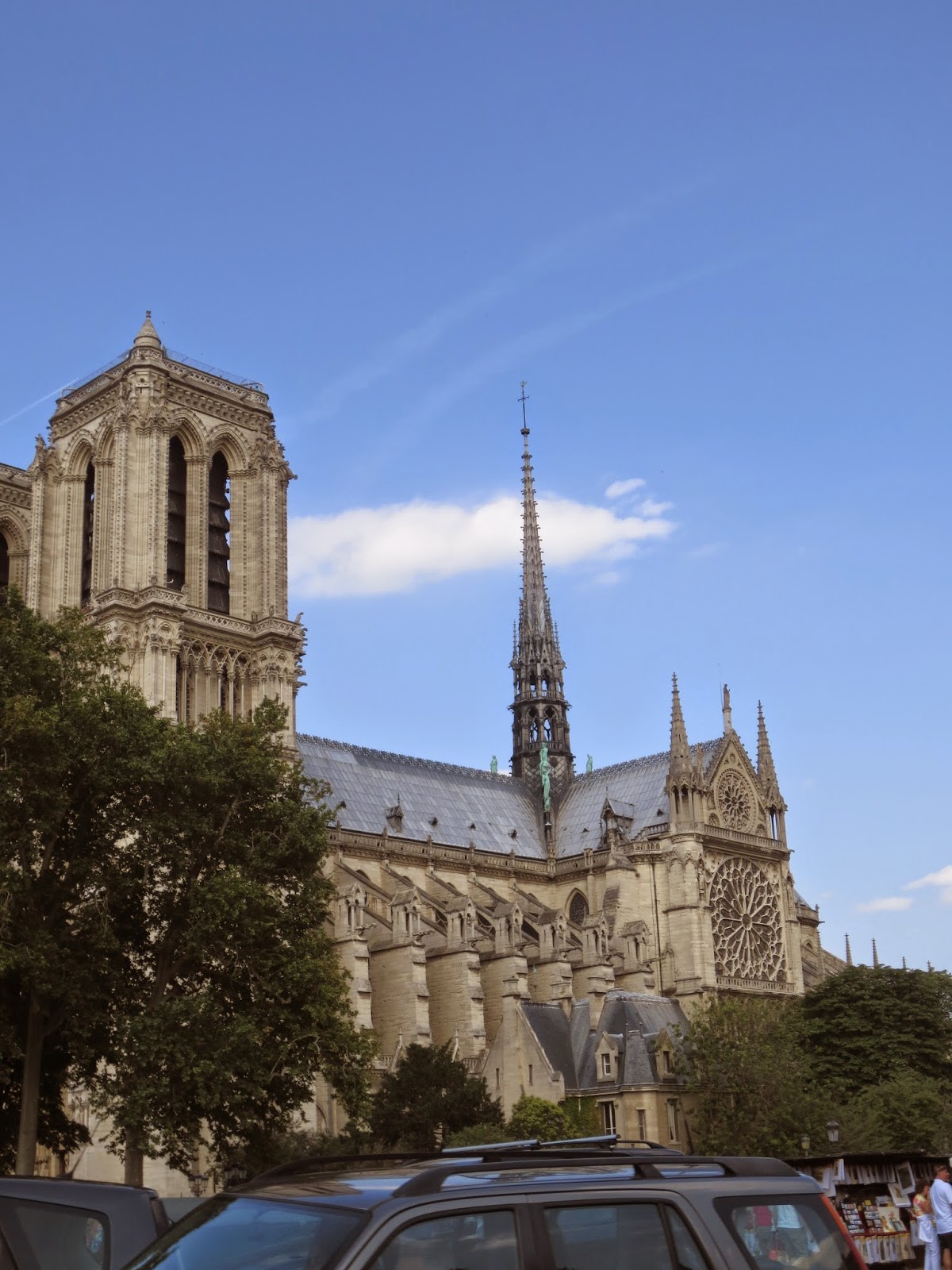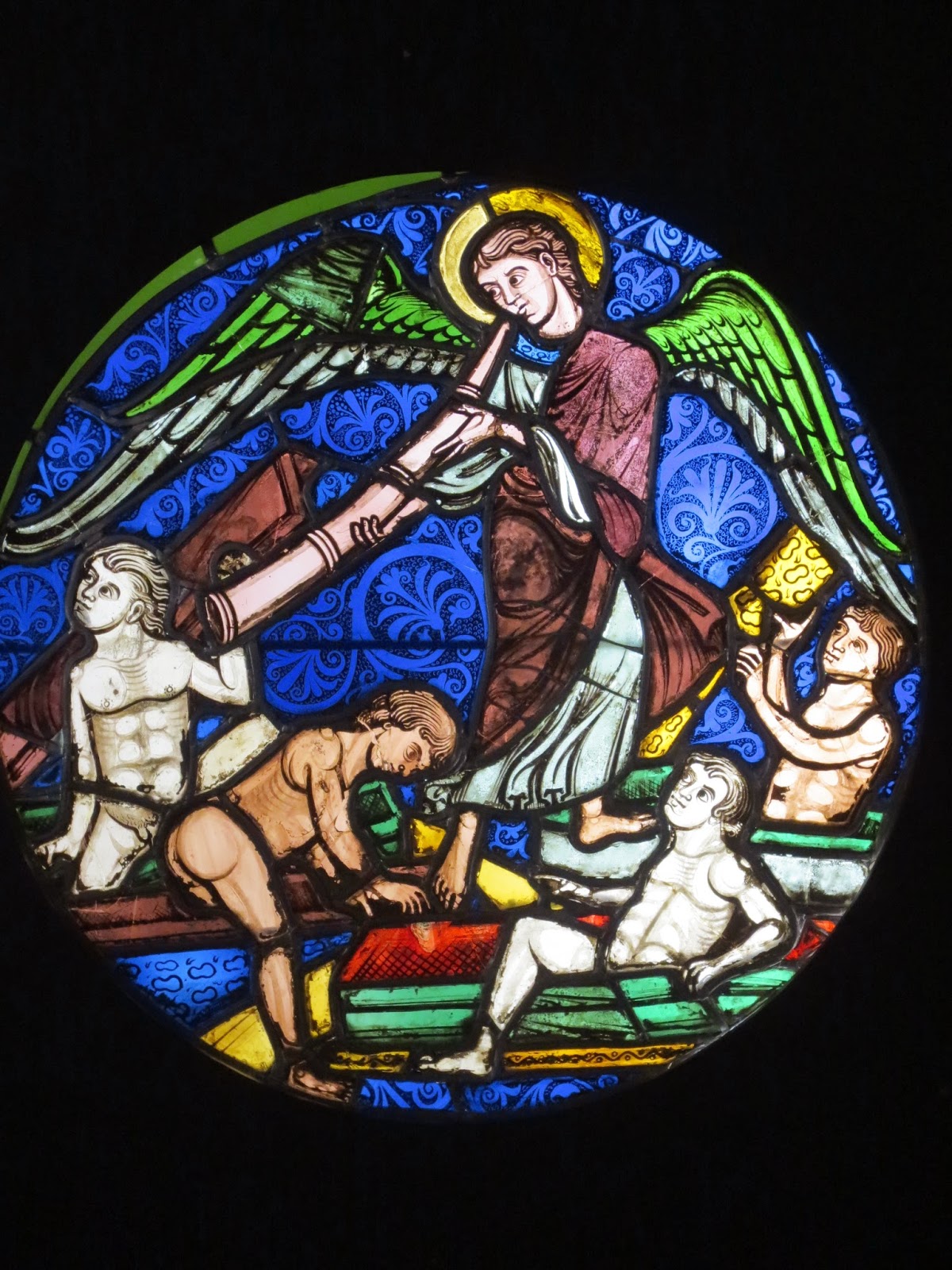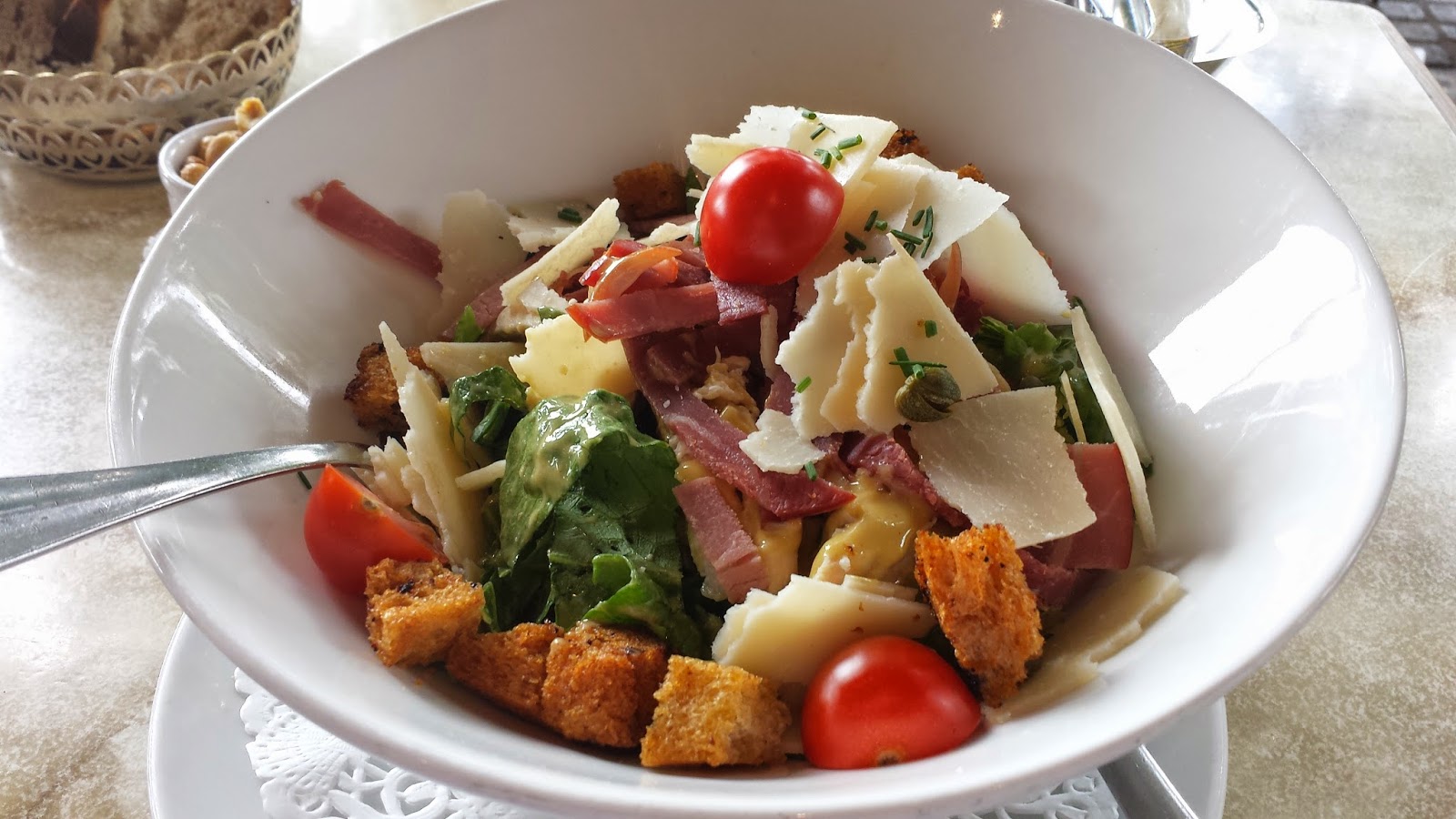First, the good news--after e-mailing the apartment owner about the incessant banging, he called the pub below and they discovered that the heavy barred door that leads to the bathroom was broken. Or rather, that mechanism at the top that's supposed to ease it closed so it doesn't slam was broken. So they jimmied some sort of fix and it was much quieter last night, and I found a note slipped through my mail box slot today from the manager of the pub offering me a free meal there. Sweet!
Today was a beautiful, sunny day, which I enjoyed very much as I know that's a bit of a rarity here:
Now that I was aware of the whole ticketing thing for the walking tour, I got to the right spot, got my ticket, and spent the next 2 1/2 hours learning all kinds of interesting things about Edinburgh's history, much of which I've now forgotten, but I remember enough to hopefully pass on a few entertaining stories. We started here at a market pillar just outside of St. Giles. You can see a unicorn at the top, which is Scotland's national animal. That's right, a unicorn. Where there's now stone around the sides, there used to be wood, and those who were guilty of minor crimes (petty theft, for instance) would have an ear nailed to the wall, where they spent 24 hours at the mercy of any passersby who wanted to throw some rotten produce at them or spit on them. After their time, the nail would be slowly and carefully removed. If someone didn't want to wait that long, they could just rip most of their ear off, but that would mark them as a criminal for life, which led many of those who went the ripping route into just that direction. The number one criminal activity for women? Not hard to guess--prostitution. For men? Becoming a pirate. Both of those lives were brutal and short (average life span after beginning usually being a matter of months). Thomas Hobbes' description "life was nasty, brutish, and short" seems to apply well to these folks.
Speaking of executions, we spent a little time in Grassmarket as well (right outside my apartment) and our guide explained that The Last Drop used to serve the final drink to the condemned just before he/she was hanged. One such person was a woman named Maggie, who went to work at an inn after her husband abandoned her for another woman, and who ended up having an affair herself with the son of the innkeeper. She got pregnant, delivered a baby that later died, and she buried him down at the banks of the river. She did this in secret because of a strict law in those days called the Pregnancy Concealment Act in which is was unlawful for a woman to hide her pregnancy from the father (apparently this was aimed at trying to prevent infanticides that were occurring due to the extreme poverty in the city). Even though Maggie's baby had died of natural causes, the fact that she had concealed it still made her guilty, and her actions were somehow uncovered and she was hanged at the square. However, when they arrived at the cemetery with her in the coffin and were preparing to bury it, they heard a knocking. She was still alive. They got her out, brought her back to the square, and were preparing to hang her all over again when some kind solicitor in the crowd pointed out that since she had been declared dead, she had technically served her sentence and shouldn't be punished a second time. Others agreed, but others still wanted to see her hanged (a two for one deal, as far as the ghoulish audience was concerned) and poor Maggie had to sit there with the noose around her neck for an hour while they debated it. It was finally concluded that God had shown favor to Maggie by allowing her to retain her life, so she was let free and lived another 40 years in Edinburgh, known now as "half-hanged Maggie." Apparently, her neck was bent for the rest of her life so she was pretty easy to identify.
The next few photos come from Greyfriar's church, which is where I attended service yesterday. The cemetery surrounding the church isn't very large, but it houses over 7,000 corpses. It was common practice for centuries to just push the decomposed remains/skeletons further down and bury the more newly dead on top (which makes me think of the grave digger's scene in Hamlet). In the 1800s, some enterprising souls found they could make quite a lot of money by digging up fresh corpses and selling them to the medical school at the university, so those who were rich had iron grates over their graves for three weeks (after which the body was unusable) and family members without the means had to take turns keeping watch over the grave at night--hence the term "graveyard shift."
For Harry Potter fans, J.K. Rowling used to eat in the second story café of this building, which overlooked the cemetery and the George Heriot school beyond, both of which inspired her writing.
In the cemetery is a Moody, a McGonagall and...Tom Riddle:
Our guide said it's not uncommon to find angry threats and curses written out in notes and left on the grave for the poor man whom JK Rowling turned into young Voldemort. This church is also famous for the Covenanters, a group of Scottish Presbyterians in the 1600s who protested against the changes Catholic Charles II was imposing on all the churches in the UK. They were dealt with very harshly by George "Bloody" Mackenzie, who imprisoned about 600 of them here (also on the church grounds) and did quite horrible and cruel things to them like [stop reading if you are easily disturbed] making them lie face down in the mud as it rained and telling them that if they lifted their head to breathe, the two people on either side of them would get shot. Many heroically did not lift their heads and drowned. The prison is now a mausoleum and a popular spot for ghost tours.
On a brighter note, this little statue outside the church commemorates Greyfriars Bobby, a little terrier who belonged to a nightwatchman and, after that man died, sat faithfully at his owner's graveside (townspeople would bring him food) for the next fourteen years.
This little passage here is a great example of the many "closes" that populate this city. Narrow (and often steep) passageways that open into rows or small squares of housing, which housed about a hundred times more people centuries ago than they do today (sometimes twenty to one dwelling). Even though life was crowded, squalid, and miserable for a large majority of the population few of them ever left the city in their lifetimes because to enter the city, you had a pay a toll and the poor couldn't afford the toll. So if they left, they could never return home again. The dense population and the abundance of chimneys in the city has left a lasting mark--the smoke stained most of the older stone buildings a dark grey or even black sooty color.
This particular close contained the building (though since destroyed and rebuilt) that Robert Louis Stevenson lived in for a time. As you can see, they go quite a few floors up, and in the old days, the richer people lived at the top and the poorer lived at the bottom. This becomes especially significant when you remember (or learn) that the way people used to dispose of their household (and personal) waste was to dump it out the windows. They were allowed to do this twice a day--once in the morning and once at night--and they were supposed to yell out a warning when they did it. Those living at the bottom got to live right next to the whole building's filth. Those at the top got to spare their aristocratic sensibilities. The night drop was allowed at 10:00pm, the same time the pubs closed, so as many drunks walked home and heard a yelling above them and they were too inebriated to think clearly, they looked up and got, well, shit-faced. Now you know where that comes from.
This same close also houses the Writer's Museum, which details and has artifacts from the lives of Stevenson (who, like Hans Christian Andersen, also loved to travel and wrote a book about it), Sir Walter Scott, and Robert Burns, all deeply venerated authors/poets here in Scotland.
Naturally, I paid it a visit after the walking tour ended. I've just come back from a nearly 4-hour dinner with a friend of a friend who works for the publisher Canongate here in Edinburgh who also got her master's degree in English and loves to write. Needless to say, we had a bit in common. Now it's time for bed!





























































































